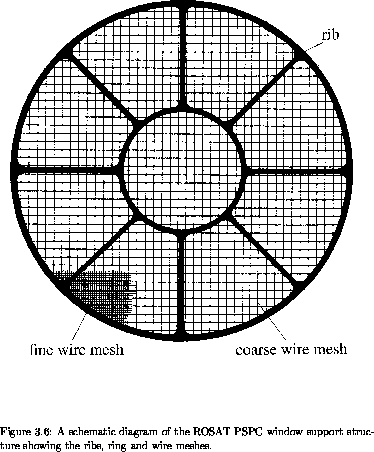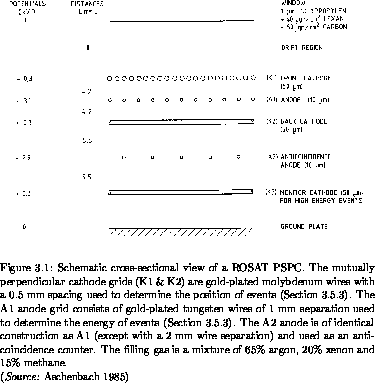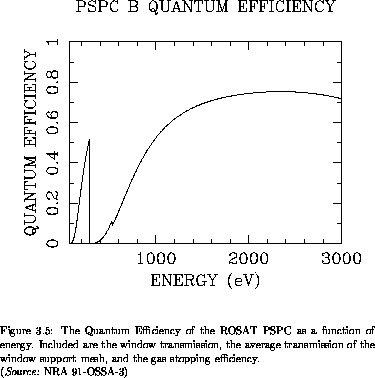The ROSAT PSPC

The PSPCs are multiwire proportional counters developed by MPE. These detectors
provide modest energy resolution (deltaE/E=0.43 (E/0.93)^-0.5), high spatial
resolution (~25 arcsec at 1 keV) over a 2 degree diamtere field-of-view,
and relative time resolution down to ~130 microseconds.

Two redundant Position Sensitive Proportional Counters (PSPC-B and PSPC-C) are mounted on a carousel within the focal plane turret of the ROSAT XRT. Two flight-spare detectors (PSPC-A and PSPC-D) were also constructed and used for some of the ground calibration measurements. PSPC-C was to be the primary detector for the mission and was used for the PVC phase and the bulk of the All-Sky Survey until its destruction during the ``Solar slew'' following an AMCS glitch on 1991 January 25. The reserved PSPC-B detector was used thereafter (and hence during all AO pointed observations except those performed during the PVC phase).
On September 11, 1994, after four years of successful operation, the PSPC was shut down to conserve the remaining detector gas. This remaining gas will be used during 1997 in a series of pointings to complete the all-sky survey coverage.
Each PSPC consists of essentially two separate counters: the anode A1 with the cathodes K1 and K2 as the position sensing, X-ray sensitive counter, and the anode A2 as the anticoincidence counter for background rejection. Each electrode is a wire grid, with the wires bonded onto a ceramic support frame. The anode grids have gold-plated tungsten wires, 10 microns in diameter and a spacing of 1.5 mm and 2 mm for A1 and A2, respectively. At the edges of the anode grids are guard wires with increasing diameters to lower the electric field. The cathode grids are made of platinum iridium wires, 50 microns in diameter and with 0.5 mm spacing. The cathodes are grouped by seven or eight for signal processing. he anode and cathode grids are contained in a gas-filled counter housing containing a mixture of 65% argon, 20% xenon and 15% methane. An X-ray photon, passing through the thin plastic entrance window, will be photo-electrically absorbed by the counter gas producing a photo-electron.
 For more detailed information see the
PSPC chapter of the
ROSAT Users Handbook.
For more detailed information see the
PSPC chapter of the
ROSAT Users Handbook.
Curator:
HEASARC Guest Observer Facility
Please use the Feedback link if you have questions on ROSAT.

